This post may contain affiliate links at no additional cost to you. As an Amazon Associate I earn from qualifying purchases. Click to view our full disclosure.
What's inside
Walking into the gym for the first time at the age of 16 years old I was confronted with a vast array of equipment that I had no idea how to use.
Armed with a sports drink and hand towel I courageously ventured into unknown territory.
Lurking in the corner there was one piece of kit which caught my eye as it looked like no other piece of equipment in the gym with its height, jutting handles and pads…
The Power Tower is a multi-functional tower that manipulates your bodyweight in order to challenge different muscle groups across numerous joints.
With its many handles and pads, you can perform a vast array of upper, lower and full body exercises.
This versatility makes it simple to use and create any Power Tower Workout!
Getting to grips with the Power Tower (literally), doesn’t take long and you find that it is one of the most adaptable, practical and beneficial pieces of kit you can find!
For a detailed review on the Power Tower and its effectiveness and functionality, check out the following article on the Power Tower 101.
Beginner Power Tower Workout Routine
Workout Structure
The Power Tower workout will last approximately 20 minutes with 4 exercises in total. The aim is to complete 3 sets of 10 reps for each exercise – ensuring to take a 1 minute rest between sets.
If you find that completing 10 reps per exercise is too challenging, either aim to do as many reps as you possibly can or use a regressed version (which you will find in the below section).
Likewise if you find any of the exercises to be too simple then aim for a higher rep count or attempt the progressed version.
Step by Step Power Tower Exercises Routine
Power Tower Leg Raises or Knee Raises
Focus Area: Core / Hip Flexors. Muscles Targeted: Abs, Obliques / Iliopsoas
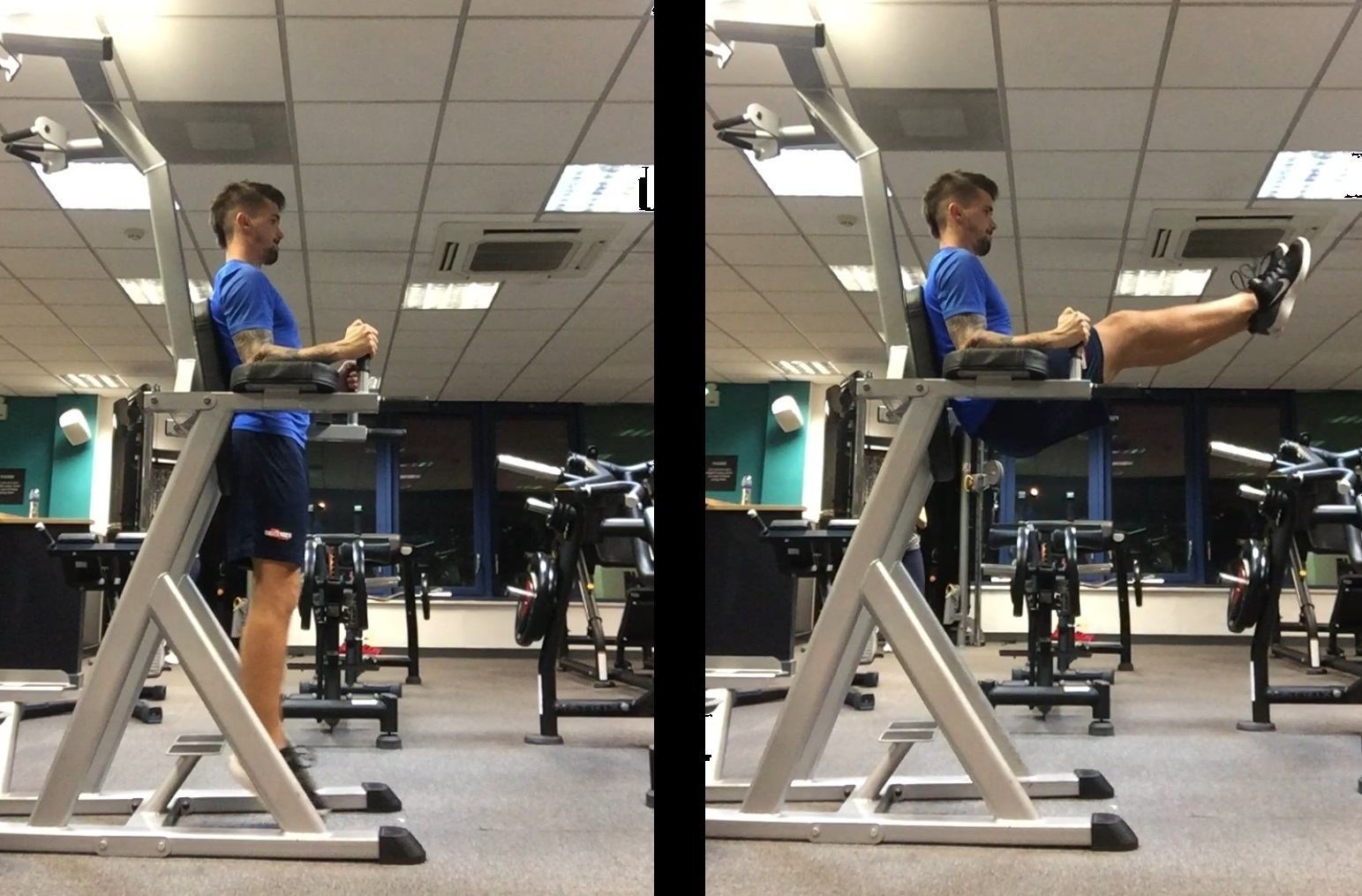
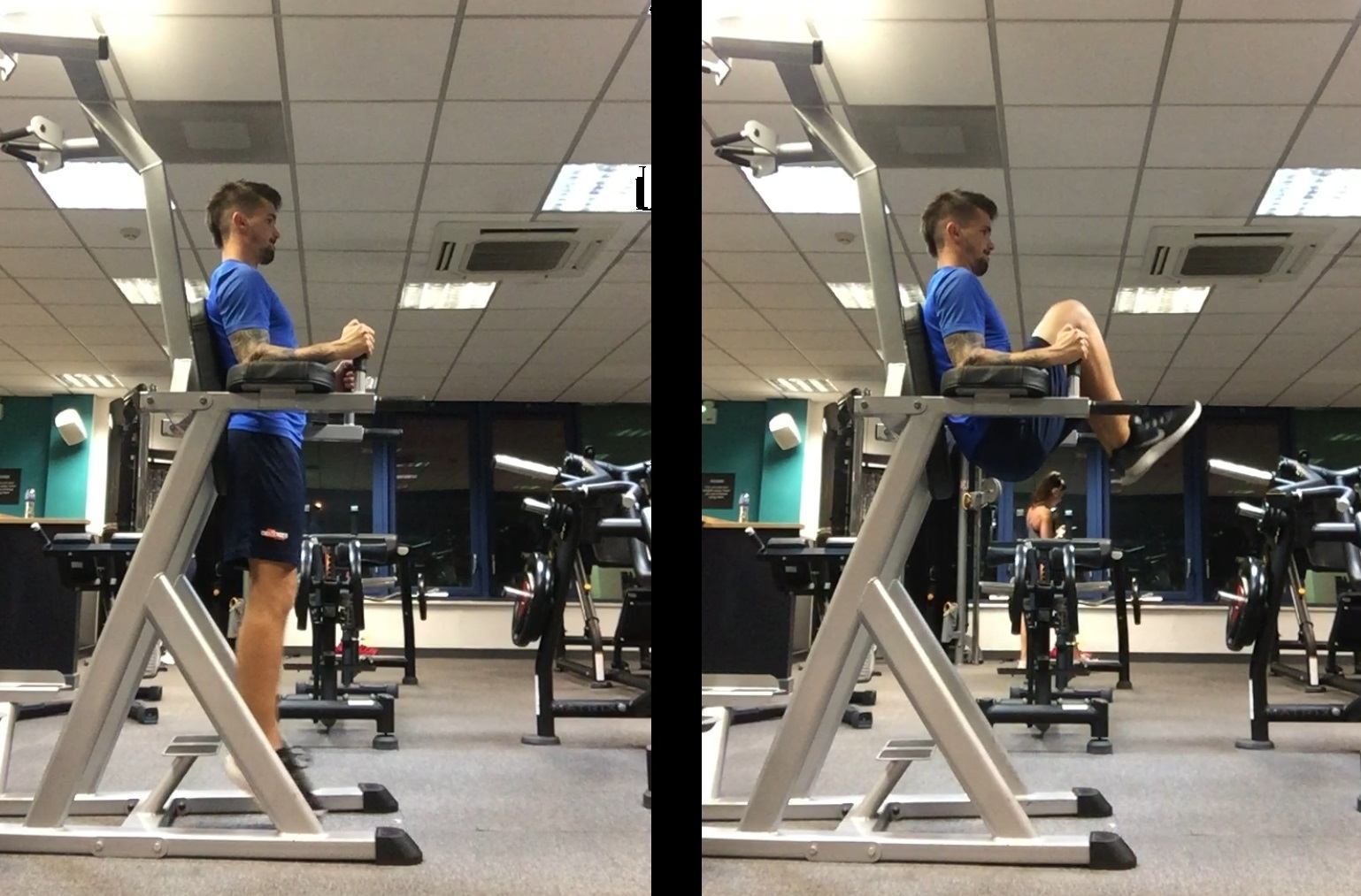
- Get lower back in firm contact with the back support- Dig elbows and forearms into the pads- Step off and keep the core tight to support body weight and keep stable.
- Drive straight legs out aiming for a minimum of hip height or drive knees up towards the chest.
- Slowly lower the legs back down until the body is straight- Keep the upper body firm and fixed throughout the movement-To make this more challenging, hang from the pull up bar stand rather than being in a fixed position.
Allowing your body to sink down, during this exercise, is very common. It’s not a huge problem, however, you find that this is happening to a great degree, stop, correct your position and continue.
Power Tower Pull-ups
Focus Area: Back / Arms. Muscles Worked: Lats / Biceps
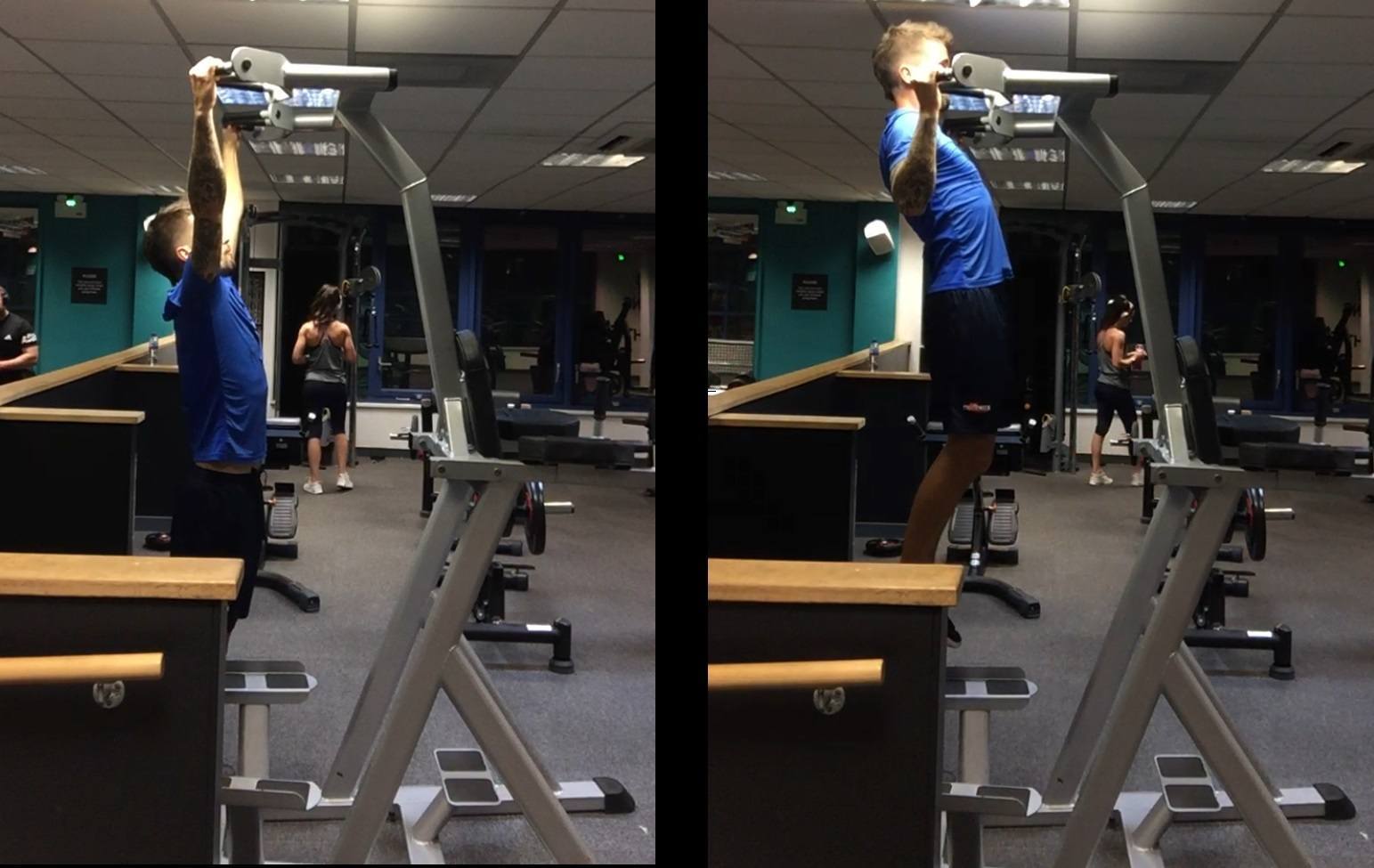
- Choose your grip or experiment up with different grips: Wide Overhand / Narrow Underhand / Reverse Grip.
- Hold on to upper handles and step off keeping the body straight- Pull body up until the upper chest is in line with the handles- Lower back down to the starting position in a controlled manner.
- Slow down the speed of movement to make it more challenging or use a resistance band to assist you on the way back to simplify.
Using a Resistance Band for Pull-ups
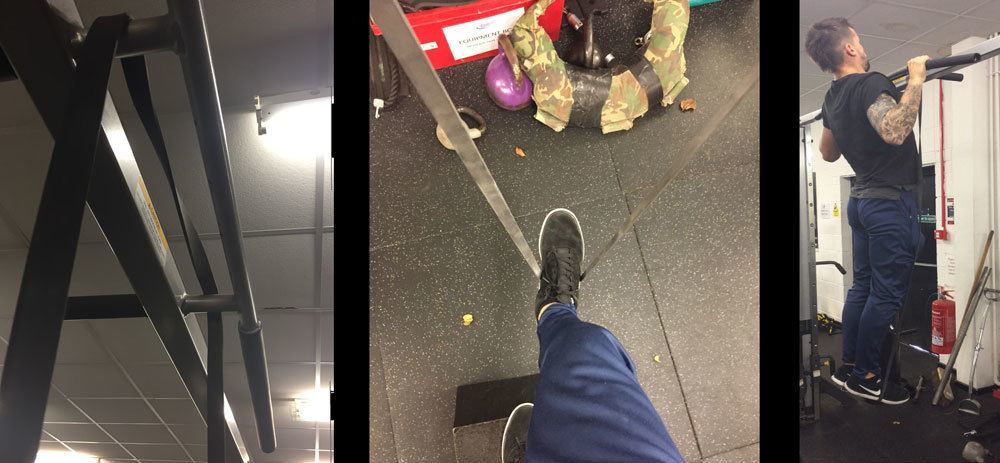
- Hook band around the handles.
- Step with both feet into the resistance band.
- Complete Pull-ups.
This exercise targets the lats which is biggest muscle in your back. It spans from the lower back all the way up to just underneath the shoulder and a powerful upper body muscle.
Power Tower Dips
Focus Area: Shoulder / Chest / Back / Arms. Muscles Worked: Deltoids / Pecs / Lats, Rhomboids / Triceps
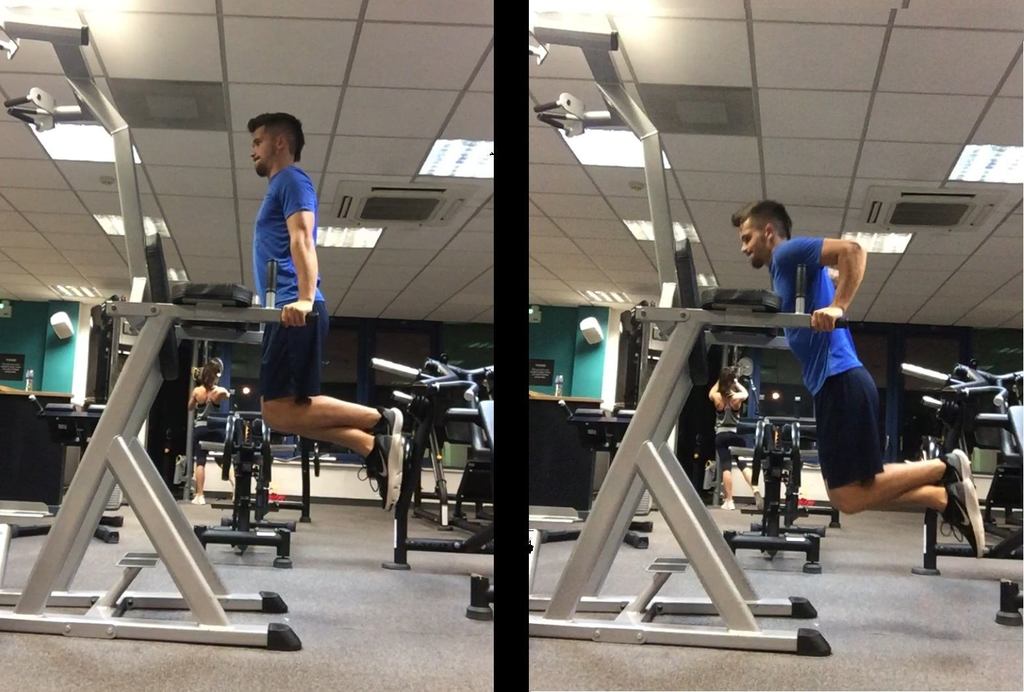
- Extend at the elbow and hold yourself up straight with knees bent at 90*.
- Hinge at the elbow dropping down until the elbow joint is at 90* (avoid dropping lower than this).
- Drive back up to the starting position.
- Keep core tight and chest lifted throughout.
A brilliant exercise that engages so much musculature in the upper body. A wider grip will demand more from the chest muscles (pecs) whereas a narrow grip will be more arms dominant (triceps).
Power Tower Split Squat
Focus Area: Legs. Muscles Worked: Glutes, Quadriceps, Hamstrings

- Place back foot on the Power Tower.
- Aim to keep the ankle, knee and hip all in line- Bend the front knee which will bring the back knee down towards the floor- Driving up ensuring the knee does not move inwardly- Keep the chest up and core tight throughout.
Here we use the Power Tower in a slightly unconventional way – however, this is such a brilliant for single leg strength development!
Conclusion
The Power Tower is a truly brilliant piece of functional kit which is often underutilized and is an absolute must for any home gym.
You now have the knowledge to be able to use the Power Tower safely and effectively.
More than that, you now have full body routine to follow and I guarantee, if you stick with the routine, you’ll soon be reaping the benefits!

